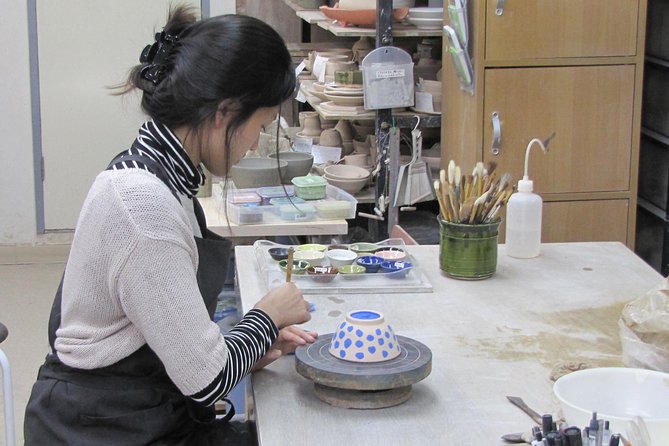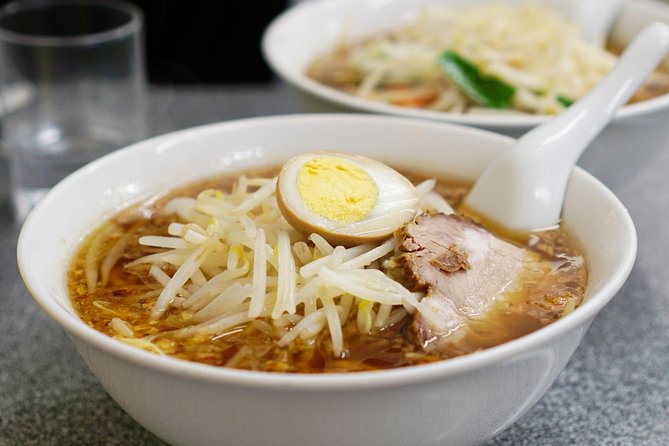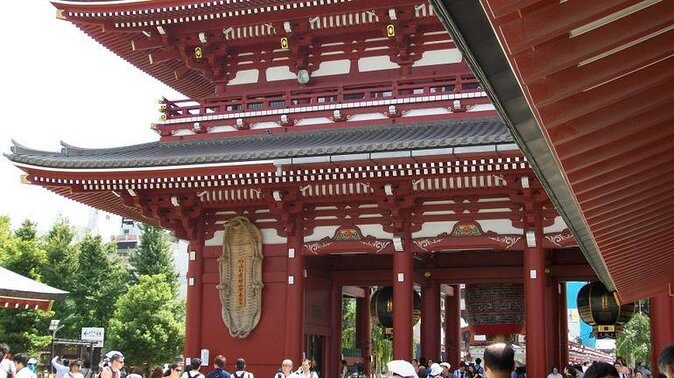Experience the ultimate exploration of Kyoto’s cultural treasures with the ‘Complete Kyoto Tour in One Day, Visit All 12 Popular Sights!’
This extraordinary tour is like a magical key that unlocks the city’s hidden wonders, allowing you to learn about its rich history and breathtaking beauty.
From the majestic Kinkakuji Temple to the enchanting Arashiyama Bamboo Grove, you will be captivated by the iconic sights that define Kyoto.
With a knowledgeable guide by your side, you can navigate through the bustling streets and discover the hidden gems that make this city truly remarkable.
Whether you’re a history buff, a nature lover, or simply seeking adventure, this tour offers the freedom to explore and experience the best of Kyoto in just one unforgettable day.
Quick Takeaways
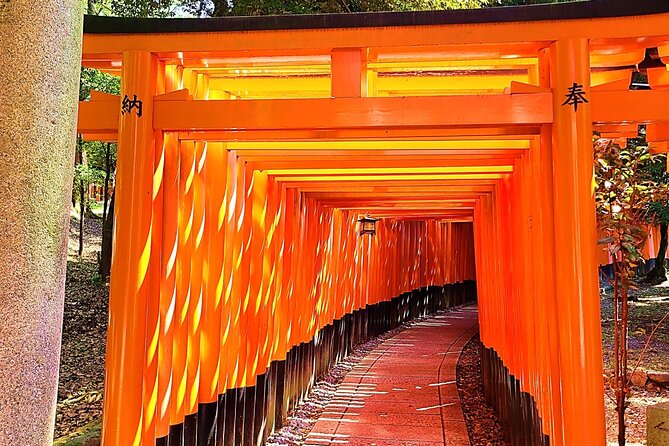
- The tour has received positive reviews, with travelers praising the knowledgeable and caring guides.
- The tour covers the most famous places in Kyoto, including Kinkakuji and other renowned temples.
- The tour involves a fair amount of walking, with travelers needing to walk over 20,000 steps.
- Lunch is provided at a sushi-go-round restaurant, though vegetarian options may be limited.
Kinkakuji Temple
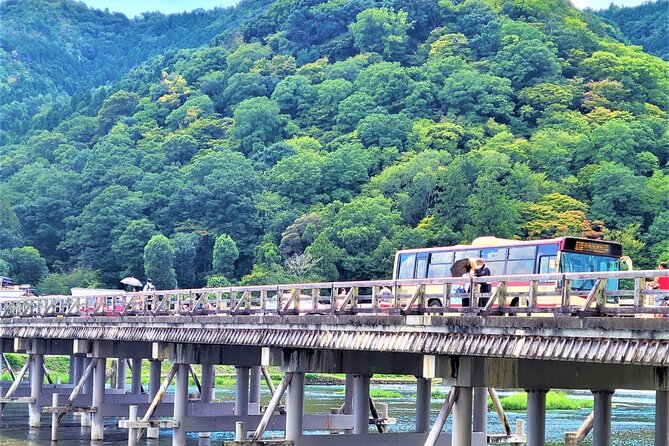
Kinkakuji Temple is frequently visited by travelers on the Complete Kyoto Tour in One Day, as it’s one of the most famous sights in Kyoto. This iconic temple is renowned for its traditional architecture and design, showcasing the beauty of Kyoto’s cultural heritage.
The temple, also known as the Golden Pavilion, is a three-story structure covered in gold leaf, reflecting its name. It’s situated within a beautiful garden that adds to its allure. The temple’s striking appearance against the backdrop of the surrounding greenery makes it a popular spot for photography.
Visitors can explore the meticulously maintained grounds and admire the intricate details of the temple’s design. Kinkakuji Temple offers a glimpse into the rich history and aesthetic beauty of traditional Japanese architecture.
Fushimi Inari Shrine
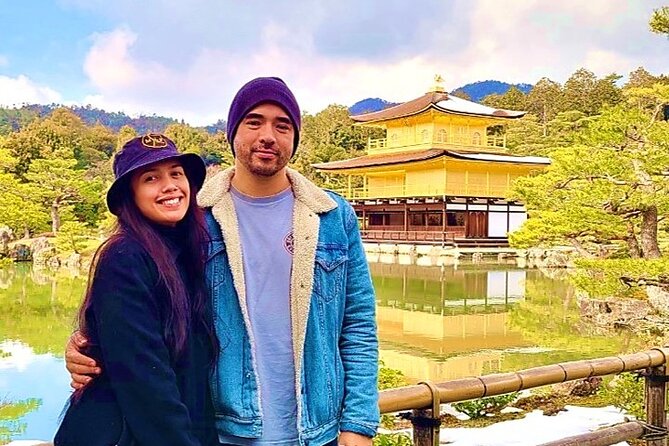
Located in the southern part of Kyoto, the Fushimi Inari Shrine is a must-visit attraction on the Complete Kyoto Tour in One Day. Here are 4 reasons why this shrine is worth exploring:
- Cultural significance: Fushimi Inari Shrine is one of the most important Shinto shrines in Japan, dedicated to the god of rice and prosperity. Its origins date back to the 8th century, and it has been an important spiritual site ever since.
- Torii gate hike experience: The shrine is famous for its thousands of vibrant orange torii gates that form a mesmerizing pathway through the forested Mount Inari. Visitors can take a hike along the trail, passing through these gates and enjoying the serene atmosphere.
- Stunning views: As you ascend Mount Inari, you’ll be rewarded with breathtaking panoramic views of Kyoto city and the surrounding landscape. It’s a great opportunity to take beautiful photos and appreciate the natural beauty of the area.
- Spiritual atmosphere: The Fushimi Inari Shrine offers a peaceful and tranquil environment, perfect for those seeking a moment of reflection or meditation. The sight of the torii gates winding through the forest creates a unique and serene ambiance that’s sure to leave a lasting impression.
Arashiyama Bamboo Grove
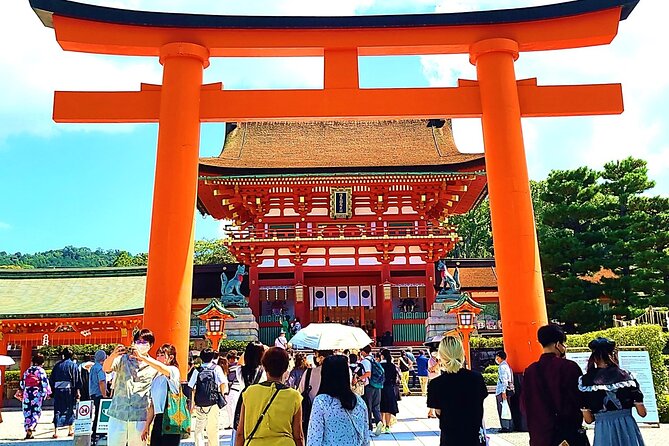
The next stop on the Complete Kyoto Tour in One Day is the mesmerizing Arashiyama Bamboo Grove. Located in the Arashiyama district of Kyoto, this natural wonder is a must-see for those seeking to explore the city’s beauty.
The bamboo grove stretches for several kilometers, creating a peaceful and serene atmosphere. As visitors walk through the towering bamboo stalks, they’re enveloped in a sense of tranquility.
The grove holds cultural significance as well, as bamboo has long been a symbol of strength and resilience in Japanese culture. Its presence in Arashiyama serves as a reminder of the deep connection between nature and spirituality.
Whether strolling through the grove or simply admiring its beauty, exploring Arashiyama’s bamboo grove is an experience that shouldn’t be missed.
Kiyomizu-dera Temple
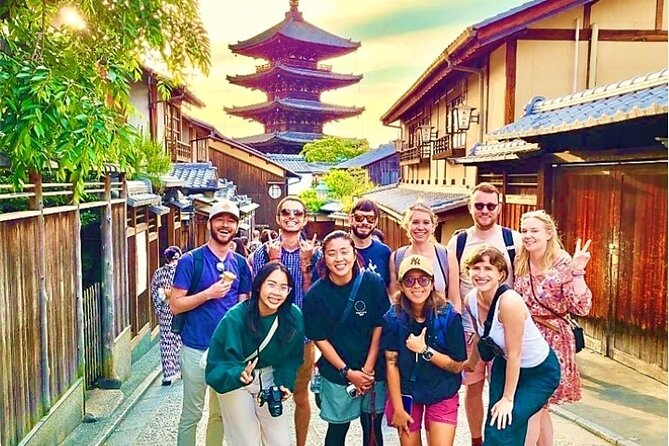
One of the highlights of the Complete Kyoto Tour in One Day is the renowned Kiyomizu-dera Temple. This temple holds immense cultural significance and is known for its architectural beauty. Here are some key details about this historical site:
- Historical background: Kiyomizu-dera Temple was first established in 778 and has since undergone several reconstructions. It’s recognized as one of Kyoto’s oldest and most iconic temples.
- Unique features: One of the temple’s most striking features is its wooden terrace, which offers panoramic views of Kyoto. The main hall, built without the use of any nails, is also a remarkable architectural achievement.
- Cultural significance: Kiyomizu-dera Temple is a UNESCO World Heritage site and is deeply rooted in Japanese Buddhism. It’s a popular destination for pilgrims and visitors seeking to experience the spiritual atmosphere of Kyoto.
- Architectural beauty: The temple’s intricate design and vibrant colors make it a visual delight. The surrounding cherry blossoms in spring and autumn foliage add to its charm, making it a must-visit attraction in Kyoto.
Visiting Kiyomizu-dera Temple provides a glimpse into Japan’s rich history and offers a serene escape from the bustling city.
Nijo Castle
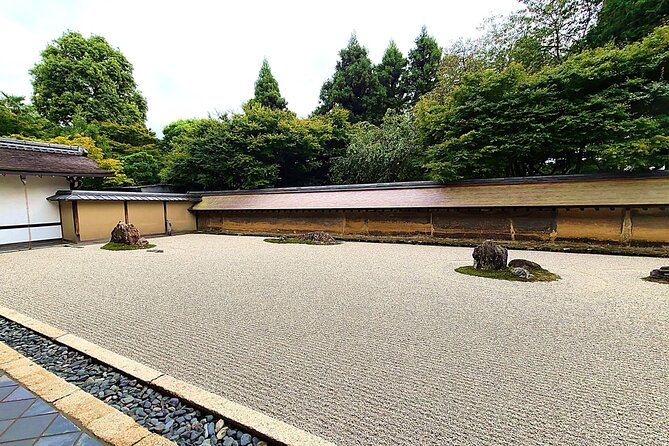
Visitors to Kyoto can explore Nijo Castle, a historical landmark steeped in rich cultural heritage. Nijo Castle is renowned for its architecture and gardens, providing a glimpse into Japan’s feudal past. Built in the 17th century, the castle served as the residence of the Tokugawa shoguns. The castle’s main buildings, Ninomaru Palace and Honmaru Palace, showcase exquisite craftsmanship and intricate artwork. Visitors can walk through the castle’s corridors, adorned with ‘nightingale floors’ designed to chirp when stepped on, serving as a security measure.
The castle’s gardens, with their meticulously manicured landscapes, offer a tranquil retreat amidst the bustling city. After exploring the history and beauty of Nijo Castle, visitors can enjoy the captivating cultural traditions of Kyoto at Nishiki Market. Known as ‘Kyoto’s Kitchen,’ Nishiki Market is a vibrant market filled with stalls selling fresh produce, local delicacies, and traditional crafts. It’s the perfect place to experience the flavors and sights of Kyoto’s culinary scene while also indulging in some shopping.
Gion District
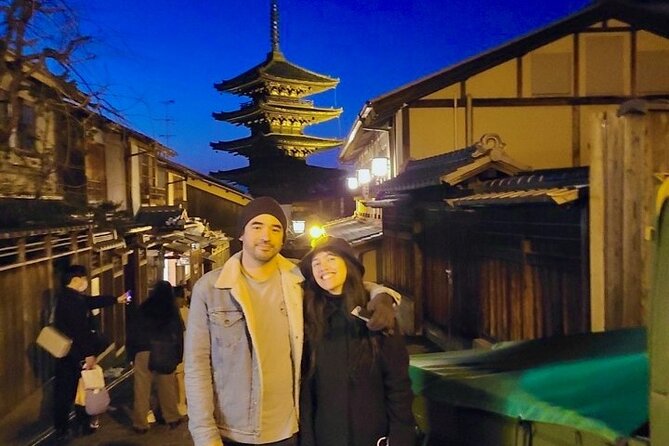
Located in the heart of Kyoto, Gion District is known for its traditional architecture and geisha culture. Here are four key aspects that make Gion District a must-visit destination:
- Traditional Geisha Culture: Gion is renowned for being the hub of the geisha community in Kyoto. Visitors have the opportunity to catch a glimpse of geishas in their exquisite traditional attire as they gracefully walk through the streets.
- Traditional Tea Houses: Gion is dotted with charming tea houses where visitors can enjoy the refined tea ceremony experience. These tea houses offer a serene atmosphere, where guests can savor matcha tea and traditional Japanese sweets.
- Hanamikoji Street: This picturesque street is the main thoroughfare of Gion and is lined with beautifully preserved wooden machiya houses. It’s a perfect place to take a leisurely stroll and soak in the nostalgic ambiance of old Kyoto.
- Yasaka Shrine: Located at the eastern end of Gion, Yasaka Shrine is a significant Shinto shrine that dates back to the 7th century. Its vibrant festivals, such as the Gion Matsuri, attract locals and travelers alike, offering a glimpse into Kyoto’s rich cultural heritage.
Ryoan-ji Temple
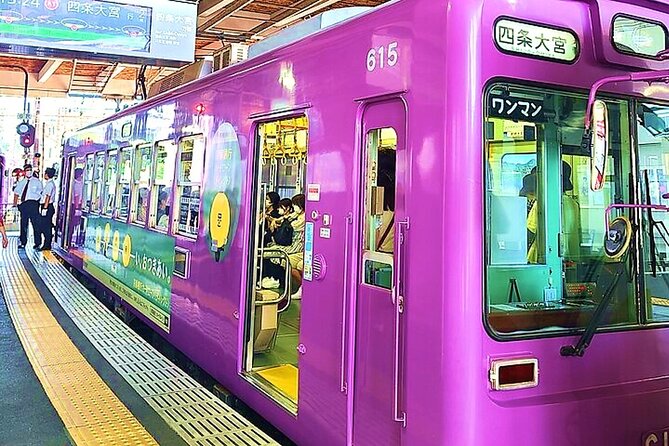
Gion District sets the stage for an unforgettable exploration of Kyoto, and now it’s time to explore the serene beauty of Ryoan-ji Temple.
The temple is famous for its Zen gardens, which are a key highlight of the visit. These meticulously designed rock gardens are considered masterpieces of minimalism and tranquility.
Ryoan-ji Temple’s history dates back to the late 15th century when it was built as a residence for an aristocratic family. Later, it was converted into a Zen temple and has since become an important spiritual and cultural site.
The significance of Ryoan-ji Temple lies in its representation of Zen philosophy, with the gardens serving as a reflection of the human mind and its search for enlightenment.
Visitors can take a meditative stroll through the gardens, appreciating the carefully placed rocks and the simplicity of the surroundings.
Ryoan-ji Temple offers a peaceful respite from the bustling city, allowing visitors to connect with their inner selves and experience a sense of freedom and tranquility.
Nishiki Market
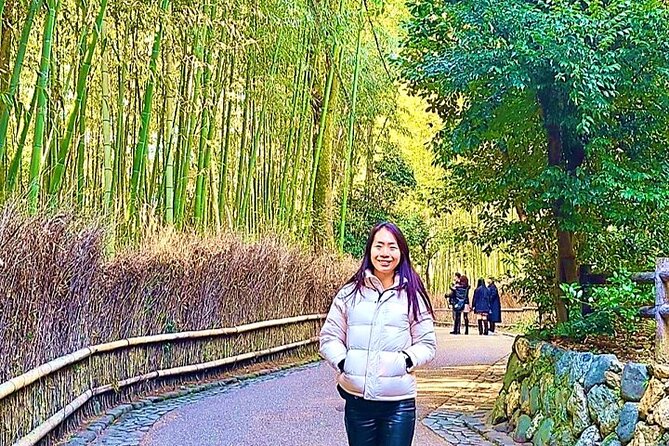
One of the popular sights to explore in Kyoto during the Complete Kyoto Tour in One Day is Nishiki Market, known for its vibrant atmosphere and wide variety of local food and products. Here are four things to experience when visiting Nishiki Market:
- Exploring local cuisine: Nishiki Market is a food lover’s paradise, offering a stack of traditional Japanese dishes and delicacies. From fresh seafood and sushi to grilled skewers and matcha-flavored treats, there’s something to satisfy every palate.
- Shopping in Nishiki Market: The market is lined with shops and stalls selling a range of goods, including Kyoto’s famous ceramics, lacquerware, traditional textiles, and unique souvenirs. It’s the perfect place to find a special memento of your visit to Kyoto.
- Sampling local specialties: Nishiki Market is known for its array of specialty shops, where you can try local Kyoto delicacies such as tsukemono (pickled vegetables), yuba (tofu skin), and wagashi (traditional Japanese sweets). Don’t miss the opportunity to taste these unique flavors.
- Immerse in the bustling atmosphere: Nishiki Market is always bustling with locals and travelers alike, creating a lively and energetic ambiance. As you stroll through the narrow lanes, you’ll be surrounded by the sights, sounds, and aromas of this vibrant market.
Ginkaku-ji Temple
Ginkaku-ji Temple stands as a serene and iconic landmark in Kyoto, offering visitors a glimpse into the city’s rich history and architectural beauty. This Zen temple, also known as the Silver Pavilion, holds great historical and cultural significance. Built in the late 15th century, Ginkaku-ji was originally intended to be covered in silver leaf, but the plan was abandoned due to lack of funds. Despite this, the temple’s simple and elegant design has made it a symbol of Japanese aesthetics. Surrounded by beautifully manicured gardens, Ginkaku-ji provides a peaceful retreat for meditation and contemplation. Inside the temple, visitors can view exquisite artwork and artifacts that reflect the Zen philosophy. The temple’s cultural significance lies in its association with the Higashiyama culture, a period of artistic flourishing in Kyoto. The temple and its surroundings have been designated as a UNESCO World Heritage site, preserving its historical and cultural value for generations to come.
| Historical Significance | Cultural Significance |
|---|---|
| Built in the 15th century | Symbol of Japanese aesthetics |
| Originally planned to be covered in silver leaf | Associated with the Higashiyama culture |
| Offers a glimpse into Kyoto’s rich history | UNESCO World Heritage site |
| Reflects the Zen philosophy | Provides a peaceful retreat for meditation |
Sanjusangendo Temple
Sanjusangendo Temple, located in eastern Kyoto, is a must-visit attraction known for its impressive collection of 1,001 statues of Kannon, the Buddhist goddess of mercy. This historical temple holds great significance and showcases remarkable architectural features.
Here are four key aspects of Sanjusangendo Temple:
1) Main Hall: The temple’s main hall, measuring 120 meters in length, is the longest wooden structure in Japan. Its elegant design and intricate woodwork create a sense of grandeur.
2) Statues of Kannon: The highlight of Sanjusangendo is the 1,001 life-sized statues of Kannon, each adorned with 11 heads and 42 arms. The statues, crafted in the 13th century, are a testament to the exceptional skill of the artists of that time.
3) Historical Significance: Built in 1164, Sanjusangendo Temple has withstood the test of time and witnessed numerous historical events. It serves as a reminder of Kyoto’s rich cultural heritage.
4) Traditional Architecture: The temple showcases the architectural style of the Kamakura period, characterized by its curved roofs, intricate carvings, and attention to detail.
Visiting Sanjusangendo Temple allows travelers to enjoy the historical significance and architectural beauty of Kyoto’s cultural treasures.
To-ji Temple
Continuing our exploration of Kyoto’s iconic sights, the next stop on the Complete Kyoto Tour is the historic To-ji Temple.
Built in the 9th century, To-ji Temple is a UNESCO World Heritage site and one of Kyoto’s most important Buddhist temples. As visitors enter the temple grounds, they’ll be greeted by the towering pagoda, which stands at a height of 57 meters, making it the tallest wooden pagoda in Japan.
The architecture of To-ji Temple is a beautiful example of the Heian period, with intricate details and striking designs. Inside the temple, visitors can explore the main hall, which houses various Buddhist statues and artifacts.
Plus, To-ji Temple is known for its local customs and traditions, such as the flea market held on the 21st of each month, where visitors can browse for unique souvenirs and local products.
A visit to To-ji Temple is a must for anyone interested in exploring the rich history and cultural heritage of Kyoto.
Philosopher’s Path
The Philosopher’s Path is a serene and picturesque walkway that stretches approximately two kilometers along the canal in Kyoto, offering visitors a tranquil experience amidst the city’s bustling attractions. Here are four reasons why the Philosopher’s Path is a must-visit destination in Kyoto:
- Exploring nature: As you stroll along the path, you’ll be surrounded by beautiful cherry blossom trees in spring, creating a breathtaking sight. The path is also lined with lush greenery and offers views of the Higashiyama mountains, providing a peaceful escape from the urban environment.
- Historical significance: The Philosopher’s Path gets its name from the influential philosopher Nishida Kitaro, who was said to have walked along this path daily for meditation. Along the way, you can discover several historic temples and shrines, such as the Ginkaku-ji Temple and the Eikan-do Zenrin-ji Temple, which add to the path’s cultural significance.
- Tranquil atmosphere: The Philosopher’s Path is known for its tranquility, making it an ideal spot for contemplation and relaxation. The peaceful ambiance, combined with the sound of the flowing canal, creates a soothing environment that allows visitors to connect with nature and find inner peace.
- Scenic views: The path offers picturesque views at every turn. Whether it’s the reflection of cherry blossoms on the canal, the vibrant colors of autumn leaves, or the snow-covered scenery in winter, each season brings its own unique charm to the Philosopher’s Path.
Common questions
How Long Does the Complete Kyoto Tour in One Day Last?
The duration of the Complete Kyoto Tour in One Day, visiting all 12 popular sights, is a full-day tour. The itinerary covers the most famous places in Kyoto, including Kinkakuji and other renowned temples.
Is Lunch Included in the Tour Package?
Yes, lunch is included in the tour package. Travelers will enjoy a traditional Japanese cuisine at a sushi-go-round restaurant. It’s a great opportunity to try local street food options and immerse in the culinary culture of Kyoto.
Are There Any Vegetarian Options Available for Lunch?
Yes, there are vegetarian lunch options available for the Complete Kyoto Tour. The tour includes lunch at a sushi-go-round restaurant, where some menu items may be suitable for vegetarians. Guests can enjoy local Kyoto cuisine options.
Can I Join the Tour if I Have Mobility Issues or Difficulty Walking?
The complete Kyoto tour offers accessibility options for individuals with mobility issues or difficulty walking. Wheelchair-friendly arrangements can be made upon request. Please contact the tour provider for more information and to ensure a comfortable experience.
What Is the Group Size for the Complete Kyoto Tour in One Day?
The group size for the complete Kyoto tour in one day is not specified. However, for individuals with mobility issues or difficulty walking, it is recommended to inquire about accessibility options for the tour.
The Sum Up
To sum it up, the Complete Kyoto Tour in One Day offers an excellent opportunity to explore and experience the most popular sights in Kyoto, Japan. With positive reviews highlighting the knowledgeable guides and the chance to see multiple attractions in a single day, this tour is highly recommended for those looking to make the most of their time in Kyoto.
However, it’s important to note that there may be limitations in terms of organization and dietary options, as mentioned in a negative review.

